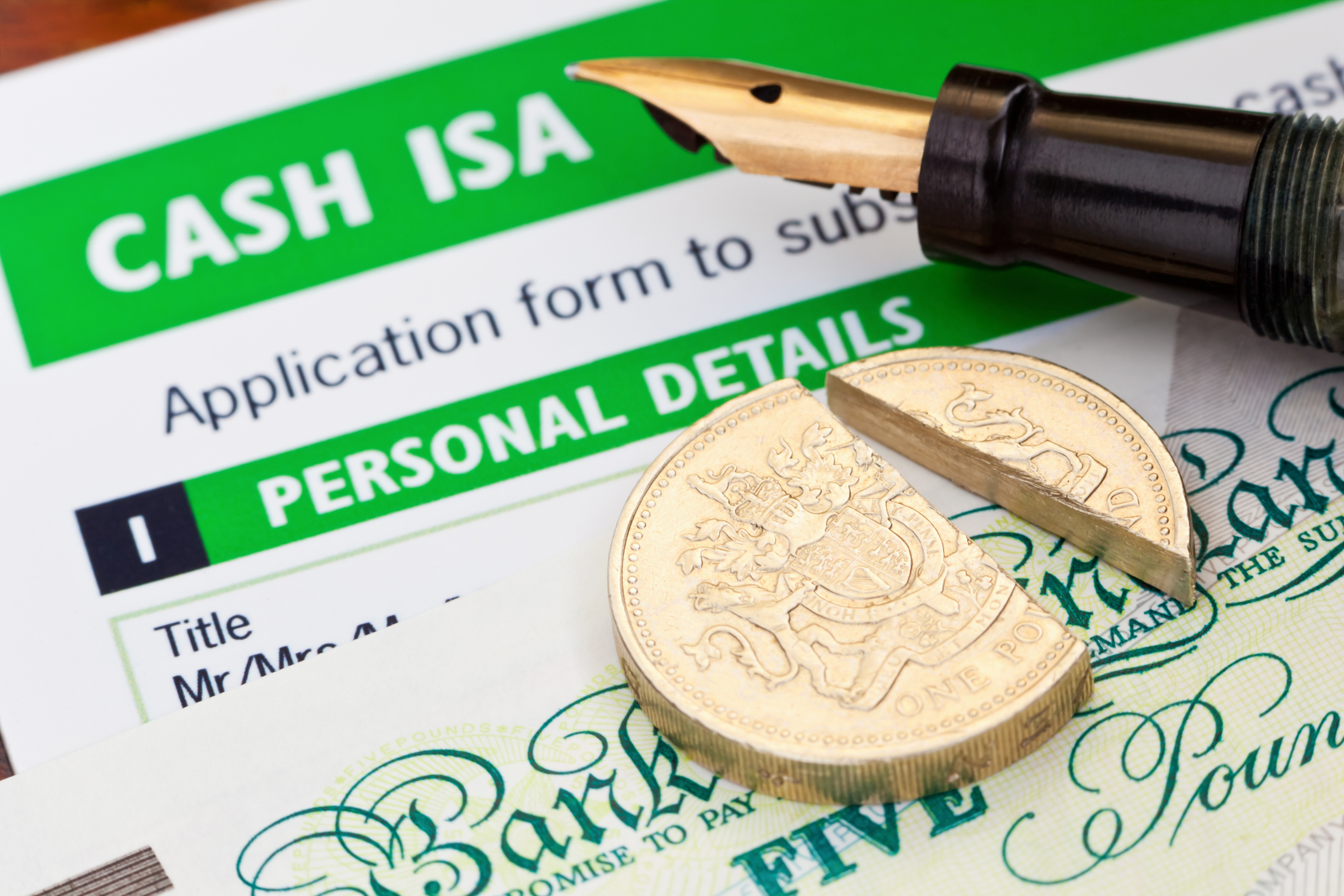Cash ISA savings surged to £70 billion as savers grabbed higher rates – but could the best deals be disappearing?
By Laura Miller
Copyright moneyweek

Try 6 issues free
View all Investing
Stocks and Shares
Commodities
Personal Finance
Personal Finance
Personal Finance
Personal Finance
View all Personal Finance
Bank accounts
Credit cards
View all Economy
Global Economy
MoneyWeek quizzes
Spending it
On this day in history
Latest magazine issue
MoneyWeek glossary
Newsletters
Newsletter sign-up
Manage my newsletters
Latest newsletter
Newsletter sign up
Inflation live
MoneyWeek quiz
£560 state pension rise
Personal Finance
Cash ISA savings surged to £70 billion as savers grabbed higher rates – but could the best deals be disappearing?
Almost 10 million people put money in cash ISAs in 2023/24 as UK interest rates climbed to 5.25% – but a series of cuts could mean inflation is eating away at your savings now
Newsletter sign up
When you purchase through links on our site, we may earn an affiliate commission. Here’s how it works.
Cash ISA savings surged to £70 billion as savers grabbed higher rates – but could the best deals be disappearing?
(Image credit: Getty Images)
Laura Miller
18 September 2025
Savers rushed into cash ISAs last year to take advantage of some of the highest interest rates on the market for savings since the financial crisis, according to latest government figures.
Cash ISA subscriptions grew by 67% – a jump of £27.9 billion – in the 2023/24 tax year, HMRC’s data showed. This took the total ploughed into cash ISAs for the year to £69.5 billion.
By comparison, money invested in stock and shares ISA rose by a much more modest 11% – amounting to £3.1 billion – totalling £31.1 billion.
Subscribe to MoneyWeek today and get your first six magazine issues absolutely FREE
Get 6 issues free
Sign up to Money Morning
Don’t miss the latest investment and personal finances news, market analysis, plus money-saving tips with our free twice-daily newsletter
Don’t miss the latest investment and personal finances news, market analysis, plus money-saving tips with our free twice-daily newsletter
These figures don’t reflect the dash-to-cash ISA ‘stuffing’ in early 2024/25. This is when rumours swirled that chancellor Rachel Reeves might slash the cash ISA allowance ahead of the Spring Statement, with some suggestions the limit could go as low as £5,000. Billions were hurriedly parked into cash at that time, and the next HMRC release is likely to show another surge in cash ISA take-up.
Instead the surge in 2023/24 was down to a higher Bank of England base rate pushing up the interest rates on offer for cash ISAs.
Jason Hollands, managing director of investment platform Bestinvest, said: “Over 9.9 million people subscribed to cash ISAs in 2023/24, the highest number in eight years. It’s unsurprising this was the case given UK interest rates climbed to 5.25% during that year, their highest level since 2008.”
Rachael Griffin, tax and financial planning expert at Quilter, said higher interest rates have “clearly made cash ISAs more appealing”, offering returns not seen for over a decade. But she added this is a “temporary reprieve”.
“Rates have already started to drift lower and, with the Bank of England expected to hold today before eventually cutting, the generous cash deals of the past year are unlikely to last,” she said.
Cuts to cash savings rates
The Bank of England Base Rate cut last month to 4% has resulted in a cascade of savings rate cuts, according to Moneyfacts analysis, with rates steadily trending downwards since the Bank began lowering rates in August 2024.
Since the start of August 2025, the average easy access savings rate has fallen by 0.08%, from 2.68% to 2.60% and the average easy access ISA rate fell by 0.08% from 2.90% to 2.82%.
The Moneyfacts average savings rate fell to 3.46% in September, down from 3.5% month-on-month. It is down from 3.8% since September 2024, and lower than 4.29% in September 2023. The rate was last above 4% in January 2024 (4.04%).
Rachel Springall, finance expert at Moneyfacts, said: “Savers pay the price of cuts to the Bank of England Base Rate, and the 0.25% reduction in August has been no exception. Overall, savings rates continue on the downward trend.”
How does inflation affect cash savings?
Savers need to remember that cash provides short-term safety but long-term stagnation, Quilter’s Griffin said.
This is because, where cash rates don’t keep up with the rate of inflation – currently 3.8%, nearly double the Bank of England’s 2% target – its value is being silently eaten away so it is worth less over time.
“Inflation will steadily erode the value of money left sitting in cash, whereas investments stand a far better chance of beating inflation and growing wealth in real terms,” Griffin explained.
However, ISAs will still be sought after by savers looking to protect their pot from tax, regardless of rate cuts. There will be many savers impacted by fiscal drag, and as a result, basic rate taxpayers who edge up into the higher-rate tax bracket at 40% will have their Personal Savings Allowance (PSA) halved from £1,000 to £500.
“This will just add fuel to the fire for demand in ISAs, yet the future of the cash ISA allowance remains up in the air as rumours continue to circulate for a review in the upcoming Budget,” said Springall.
Could the cash ISA limit be cut?
For now, it seems, the chancellor’s plans to cut the Cash ISA allowance have been put on ‘pause’ but that does not mean reform of ISAs is off-the-table completely for the remainder of this parliament.
Hollands said: “It should be noted that several alumni of the Resolution Foundation, a think tank which has previously advocated capping ISAs to £100k per person, are now in influential positions in the government.
“ISAs should not be taken for granted given the increasingly painful tax burden in the UK, with much diminished annual exemptions for capital gains and dividends, and higher rates of CGT introduced at last year’s Budget,” he said.
As the tax environment is only likely to toughen in the near term given the hole in the public finances, those able to make use of ISAs to protect wealth from taxation should do so as fully as possible, Hollands added.
Sign up for MoneyWeek’s newsletters
Get the latest financial news, insights and expert analysis from our award-winning MoneyWeek team, to help you understand what really matters when it comes to your finances.
Contact me with news and offers from other Future brandsReceive email from us on behalf of our trusted partners or sponsorsBy submitting your information you agree to the Terms & Conditions and Privacy Policy and are aged 16 or over.
Laura Miller
Social Links Navigation
Laura Miller is an experienced financial and business journalist. Formerly on staff at the Daily Telegraph, her freelance work now appears in the money pages of all the national newspapers. She endeavours to make money issues easy to understand for everyone, and to do justice to the people who regularly trust her to tell their stories. She lives by the sea in Aberystwyth. You can find her tweeting @thatlaurawrites
Families suffer £20,000 lost income growth – are you feeling the pinch?
Average incomes for working age families have increased by just 7% in the past two decades, research suggests
How to achieve a secure retirement, as more retirees admit to struggling with debt
Twenty-six percent of retirees now have unsecured debt – a sharp rise compared to two years ago – with many underestimating how much a typical retirement costs
Useful links
Subscribe to MoneyWeek
Get the MoneyWeek newsletter
Latest Issue
Financial glossary
MoneyWeek Wealth Summit
MoneyWeek Live Reports
Most Popular
MoneyWeek share tips
MoneyWeek savings stories
MoneyWeek tax stories
Contact Future’s experts
Terms and Conditions
Privacy Policy
Cookie Policy
Advertise with us
MoneyWeek is part of Future plc, an international media group and leading digital publisher. Visit our corporate site.
Future Publishing Limited Quay House, The Ambury,
BA1 1UA. All rights reserved. England and Wales company registration number 2008885.



